Types of Temperature Controllers for Silicone Heaters
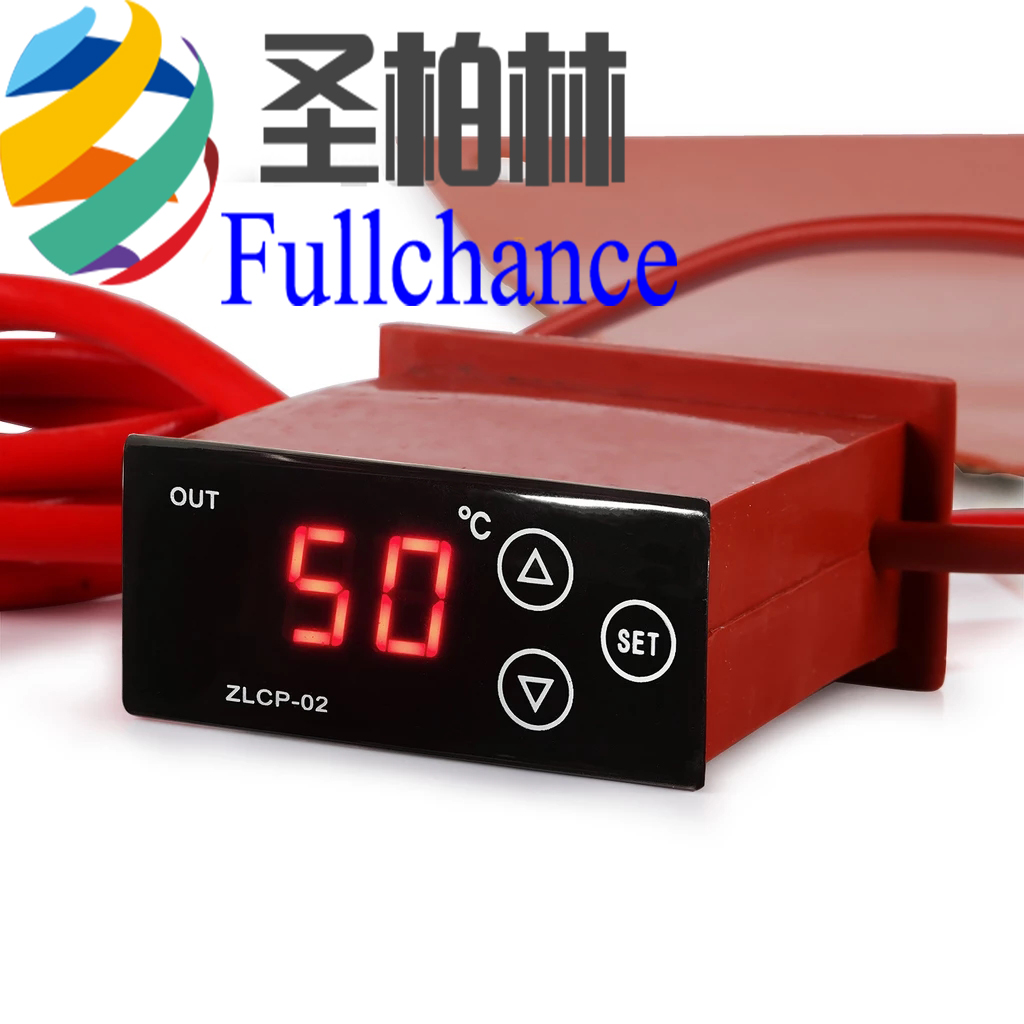
We have a variety of options for temperature controllers for silicone heaters. Each type of temperature controller is typically installed right into the silicone heater:
-
Thermostats
-
RTDs
-
Thermistors
-
Thermocouples
Virtually any type of temperature controller can be incorporated onto the heaters.
These heater temperature controllers can be designed to work with any of the heaters we provide or to work a system of your choosing.
Thermostats
Snap action and creep action are two different types of temperature controllers for silicone heaters. Both types have a bimetal expansion-contraction principle and are calibrated at the manufacturer to pre-set to a specific temperature (non-adjustable). If the silicone heater application requires precise temperature control, a digital temperature thermostat with a sensor is suggested.
Silicone heaters used for freeze protection, heated enclosures, and high-limit protection are the applications well-suited for these small and low-cost thermostats.
The creep action units are constructed with a bimetal strip that bends as the temperature rises to work as a switch opening the two contacts. This provides a close differential between on/off. They are relatively accurate with a hysteresis of +/- 5°F. These physically small thermostats are often used to control the process temperature of lower powered heaters or as an over-temperature protection for larger heater.
The snap action units are often called Disc Thermostats since they are round (approximately 5/8” dia.). The disk is shaped like a dish and snaps back and forth at a pre-set temperature to make and break the contact points.
Snap action of Disc Thermostats can carry more amperage without the use of a relay compared to the Creep Action units but the temperature control is not as accurate. The differential between on and off can be as high as 20° to 30°F.
When used for over-temperature
-
The wide differential does not provide narrow band temperature control but also does not generate any radio frequency interference due to the positive make/break action.
-
They can be equipped with a “button” to reset the thermostat manually once tripped.
-
Snap Action thermostats are bonded to the heater and an over-mold cap is used to cover them.
Temperature Sensors
Any of our Temperature Sensors can be located to monitor and control our heater’s surface temperature in order to monitor the component temperature. These small sensors are held in place with a protective cover of silicone rubber and vulcanized to the heater itself.
Thermal Fuses
Thermal fuses open the circuit if the heater exceeds the selected fuse temperature. They are a one-time over-temperature protection device that can prevent heater runaway in the event that a temperature control device fails or has frozen while on.
Fuses can be preset at almost any temperature up to 460°F. These types of temperature controllers are also covered for safety since the body of the fuse can be electrically live.
Thermocouples, Thermistors and RTDs
These types of temperature controllers are attached to the heater with a patch of silicone and are integral to the heater. CHR silicone heaters can utilize almost any type thermocouple, thermistor or RTD.
Thermocouple Types ”J” & “K” are most commonly used along with RTDs of either 100 Ohm or 1000 Ohm two conductor type.
Virtually any thermal control sensors can be incorporated onto the heaters.
These can be designed to work with the temperature control systems we provide or to work a system of your choosing.
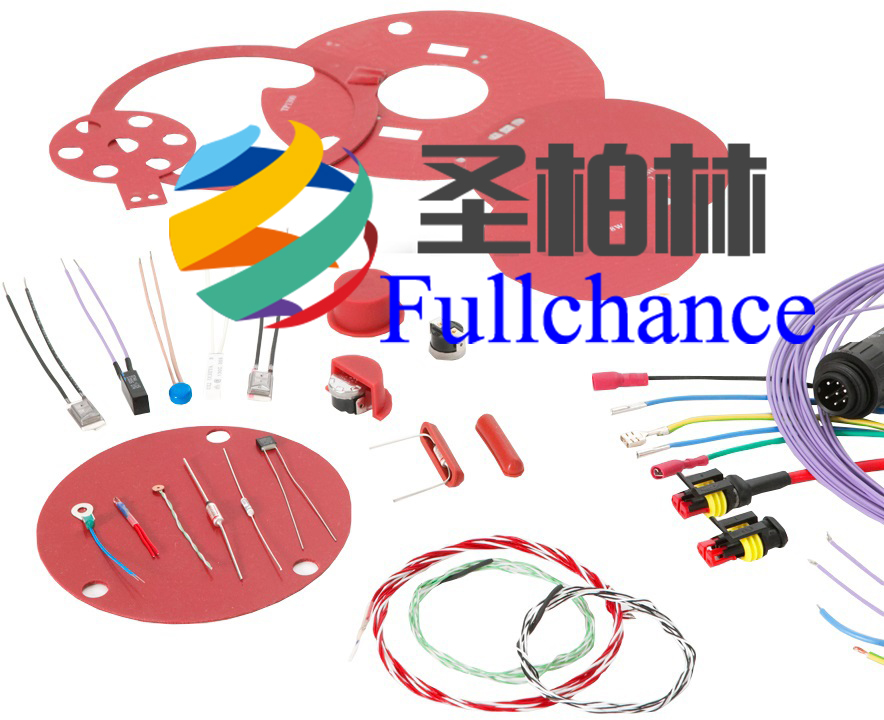
SENSOR OPTIONS

Thermocouple
Fullchance can incorporate common Type J or K thermocouples almost anywhere on the heater surface. Other thermocouple types can also be used. Standard thermocouple temperature ranges apply. Specify when ordering. See Temperature Sensors for optional plugs.

RTD's
The RTDs (2- or 3-wire) used are platinum thin film 100 ohm @ 100°C. The standard curve is 0.00385 TCR / DIN432760. Other common RTDs such as 1000 ohm can also be used. Specify when ordering.
The RTD's resistance increases with a rise in temperature and is considered the most accurate and stable sensor.

Thermistors
Thermistors are also a resistive-based temperature sensor. They do not generally respond in a linear style and are used in a limited temperature range or at a specific single temperature.
Small bead style thermistors can be mounted directly on the heater.
The thermistor's response is generally designed directly into the customer's electronic control system. Therefore if a thermistor is required, specify manufacturer, specific model number, type and specifications when requesting a quote. Consult Fullchance for more information.

No Temperature Sensor
A temperature sensor is not needed for this heater.

TEMPERATURE CONTROL OPTIONS

Snap Action Thermostat - Automatic Reset
Quick cutout on rise to temperature. The contacts will open on rise when the temperature increases to the snap point of the calibrated bimetal disc.
Setpoint (opens): available from 50 to 450°F in 10°F increments (most thermostats close 20 to 30°F below setpoint)
Electrical Ratings: 125 Vac, 15 Amp, 1875W, 250 Vac, 10 Amp, 2500W
Minimum Heater Width: 1.312"

Adjustable Thermostat
Adjustable thermostats allow the user to dial-in a specific temperature and attain a desired result. The thermostat is enclosed in a molded silicone rubber housing and permanently attached to the heater. The adjustment shaft extends through a pre-formed hole. A high temperature knob is included.
Amps: 12.5A @ 125V, 6.5 A @ 250V
Watts: 1500W @ 120V, 1560W @ 240V
Adjustment Ranges Available:
-
50 to 425°F (10 to 218°C)
-
90 to 140°F (32 to 60°C)
-
100 to 190°F (38 to 88°C)
-
70 to 190°F (21 to 88°C)
-
50 to 160°F (10 to 71°C)
-
70 to 140°F (21 to 60°C)
Minimum Heater Width: 1.75" (44.5 mm)
Snap Action High Limit Thermostat
A High Limit with a manual reset push button can also be designed in.
Specify when requesting a quote.
NOTE: See page 13-83 for stock temperature ratings

Creep Action Thermostat
Sustained response, and a slow cutout at the trip point. The creep action thermostat has a slow make/slow break action around setpoint.
Setpoint (opens): available in a limited selection from 50 to 300°F in 10°F increments. Consult Fullchance.
Electrical Ratings: 120 Vac, 12 Amp, 1440W, 240 Vac, 6 Amp, 1440W

Thermal Fusing
Thermal fuses / cutoffs are used as high limit protection devices to guard the object being heated from dangerous temperatures in the event of a primary control device failure. The thermal fuse can be mounted using various methods depending on other options. If the heater does not have a thermostat, the thermal fuse would be mounted under the lead exit patch. If used in conjunction with a thermostat, it could be mounted under the thermostat cover.

ADDITIONAL OPTIONS

Internal Ground Screen Plane
Some applications may require the heater to be grounded. Due to the fact that the heater sheath is non-conductive, this can only be done artificially. A second layer of insulating material and a conductive grid can be added to the heater. A ground wire is attached to the grid.
A less expensive alternative for setting up a ground wire, especially for the required ground lead of a cordset, is to have a "flying ground lead" (6" long, green) exit the lead patch for attaching to the metal load surface, effectively grounding the process.

Dual Voltage/3-Phase
Due to the flexibility in circuit design for flexible heaters, heating circuits can be designed to accommodate dual voltage.
On dual voltage heaters, three leads, including a common in a different color, are provided for wiring the heater in series for the higher voltage and parallel for the lower voltage. 120/240 Vac or 240/480 Vac can be specified.
Three-phase circuits can also be designed for large high-current applications.

Self-Limiting/Self-Regulating
The alloy used for this heater's resistance wire has a high positive temperature coefficient of resistance that allows the heater to reduce power as temperature increases. This self-regulating feature is ideal for many low temperature applications. This feature can also be beneficial when a fast start-up time is required before the heater power levels off to normal
operating temperature.
See Chart for Ratio of Hot to Cold Resistance of the Heater wire at various wire temperatures.
Types of Temperature Controllers for Silicone Heaters

We have a variety of options for temperature controllers for silicone heaters. Each type of temperature controller is typically installed right into the silicone heater:
-
Thermostats
-
RTDs
-
Thermistors
-
Thermocouples
Virtually any type of temperature controller can be incorporated onto the heaters.
These heater temperature controllers can be designed to work with any of the heaters we provide or to work a system of your choosing.
Thermostats
Snap action and creep action are two different types of temperature controllers for silicone heaters. Both types have a bimetal expansion-contraction principle and are calibrated at the manufacturer to pre-set to a specific temperature (non-adjustable). If the silicone heater application requires precise temperature control, a digital temperature thermostat with a sensor is suggested.
Silicone heaters used for freeze protection, heated enclosures, and high-limit protection are the applications well-suited for these small and low-cost thermostats.
The creep action units are constructed with a bimetal strip that bends as the temperature rises to work as a switch opening the two contacts. This provides a close differential between on/off. They are relatively accurate with a hysteresis of +/- 5°F. These physically small thermostats are often used to control the process temperature of lower powered heaters or as an over-temperature protection for larger heater.
The snap action units are often called Disc Thermostats since they are round (approximately 5/8” dia.). The disk is shaped like a dish and snaps back and forth at a pre-set temperature to make and break the contact points.
Snap action of Disc Thermostats can carry more amperage without the use of a relay compared to the Creep Action units but the temperature control is not as accurate. The differential between on and off can be as high as 20° to 30°F.
When used for over-temperature
-
The wide differential does not provide narrow band temperature control but also does not generate any radio frequency interference due to the positive make/break action.
-
They can be equipped with a “button” to reset the thermostat manually once tripped.
-
Snap Action thermostats are bonded to the heater and an over-mold cap is used to cover them.
Temperature Sensors
Any of our Temperature Sensors can be located to monitor and control our heater’s surface temperature in order to monitor the component temperature. These small sensors are held in place with a protective cover of silicone rubber and vulcanized to the heater itself.
Thermal Fuses
Thermal fuses open the circuit if the heater exceeds the selected fuse temperature. They are a one-time over-temperature protection device that can prevent heater runaway in the event that a temperature control device fails or has frozen while on.
Fuses can be preset at almost any temperature up to 460°F. These types of temperature controllers are also covered for safety since the body of the fuse can be electrically live.
Thermocouples, Thermistors and RTDs
These types of temperature controllers are attached to the heater with a patch of silicone and are integral to the heater. CHR silicone heaters can utilize almost any type thermocouple, thermistor or RTD.
Thermocouple Types ”J” & “K” are most commonly used along with RTDs of either 100 Ohm or 1000 Ohm two conductor type.
Virtually any thermal control sensors can be incorporated onto the heaters.
These can be designed to work with the temperature control systems we provide or to work a system of your choosing.

SENSOR OPTIONS

Thermocouple
Fullchance can incorporate common Type J or K thermocouples almost anywhere on the heater surface. Other thermocouple types can also be used. Standard thermocouple temperature ranges apply. Specify when ordering. See Temperature Sensors for optional plugs.

RTD's
The RTDs (2- or 3-wire) used are platinum thin film 100 ohm @ 100°C. The standard curve is 0.00385 TCR / DIN432760. Other common RTDs such as 1000 ohm can also be used. Specify when ordering.
The RTD's resistance increases with a rise in temperature and is considered the most accurate and stable sensor.

Thermistors
Thermistors are also a resistive-based temperature sensor. They do not generally respond in a linear style and are used in a limited temperature range or at a specific single temperature.
Small bead style thermistors can be mounted directly on the heater.
The thermistor's response is generally designed directly into the customer's electronic control system. Therefore if a thermistor is required, specify manufacturer, specific model number, type and specifications when requesting a quote. Consult Fullchance for more information.

No Temperature Sensor
A temperature sensor is not needed for this heater.

TEMPERATURE CONTROL OPTIONS

Snap Action Thermostat - Automatic Reset
Quick cutout on rise to temperature. The contacts will open on rise when the temperature increases to the snap point of the calibrated bimetal disc.
Setpoint (opens): available from 50 to 450°F in 10°F increments (most thermostats close 20 to 30°F below setpoint)
Electrical Ratings: 125 Vac, 15 Amp, 1875W, 250 Vac, 10 Amp, 2500W
Minimum Heater Width: 1.312"

Adjustable Thermostat
Adjustable thermostats allow the user to dial-in a specific temperature and attain a desired result. The thermostat is enclosed in a molded silicone rubber housing and permanently attached to the heater. The adjustment shaft extends through a pre-formed hole. A high temperature knob is included.
Amps: 12.5A @ 125V, 6.5 A @ 250V
Watts: 1500W @ 120V, 1560W @ 240V
Adjustment Ranges Available:
-
50 to 425°F (10 to 218°C)
-
90 to 140°F (32 to 60°C)
-
100 to 190°F (38 to 88°C)
-
70 to 190°F (21 to 88°C)
-
50 to 160°F (10 to 71°C)
-
70 to 140°F (21 to 60°C)
Minimum Heater Width: 1.75" (44.5 mm)
Snap Action High Limit Thermostat
A High Limit with a manual reset push button can also be designed in.
Specify when requesting a quote.
NOTE: See page 13-83 for stock temperature ratings

Creep Action Thermostat
Sustained response, and a slow cutout at the trip point. The creep action thermostat has a slow make/slow break action around setpoint.
Setpoint (opens): available in a limited selection from 50 to 300°F in 10°F increments. Consult Fullchance.
Electrical Ratings: 120 Vac, 12 Amp, 1440W, 240 Vac, 6 Amp, 1440W

Thermal Fusing
Thermal fuses / cutoffs are used as high limit protection devices to guard the object being heated from dangerous temperatures in the event of a primary control device failure. The thermal fuse can be mounted using various methods depending on other options. If the heater does not have a thermostat, the thermal fuse would be mounted under the lead exit patch. If used in conjunction with a thermostat, it could be mounted under the thermostat cover.

ADDITIONAL OPTIONS

Internal Ground Screen Plane
Some applications may require the heater to be grounded. Due to the fact that the heater sheath is non-conductive, this can only be done artificially. A second layer of insulating material and a conductive grid can be added to the heater. A ground wire is attached to the grid.
A less expensive alternative for setting up a ground wire, especially for the required ground lead of a cordset, is to have a "flying ground lead" (6" long, green) exit the lead patch for attaching to the metal load surface, effectively grounding the process.

Dual Voltage/3-Phase
Due to the flexibility in circuit design for flexible heaters, heating circuits can be designed to accommodate dual voltage.
On dual voltage heaters, three leads, including a common in a different color, are provided for wiring the heater in series for the higher voltage and parallel for the lower voltage. 120/240 Vac or 240/480 Vac can be specified.
Three-phase circuits can also be designed for large high-current applications.

Self-Limiting/Self-Regulating
The alloy used for this heater's resistance wire has a high positive temperature coefficient of resistance that allows the heater to reduce power as temperature increases. This self-regulating feature is ideal for many low temperature applications. This feature can also be beneficial when a fast start-up time is required before the heater power levels off to normal
operating temperature.
See Chart for Ratio of Hot to Cold Resistance of the Heater wire at various wire temperatures.
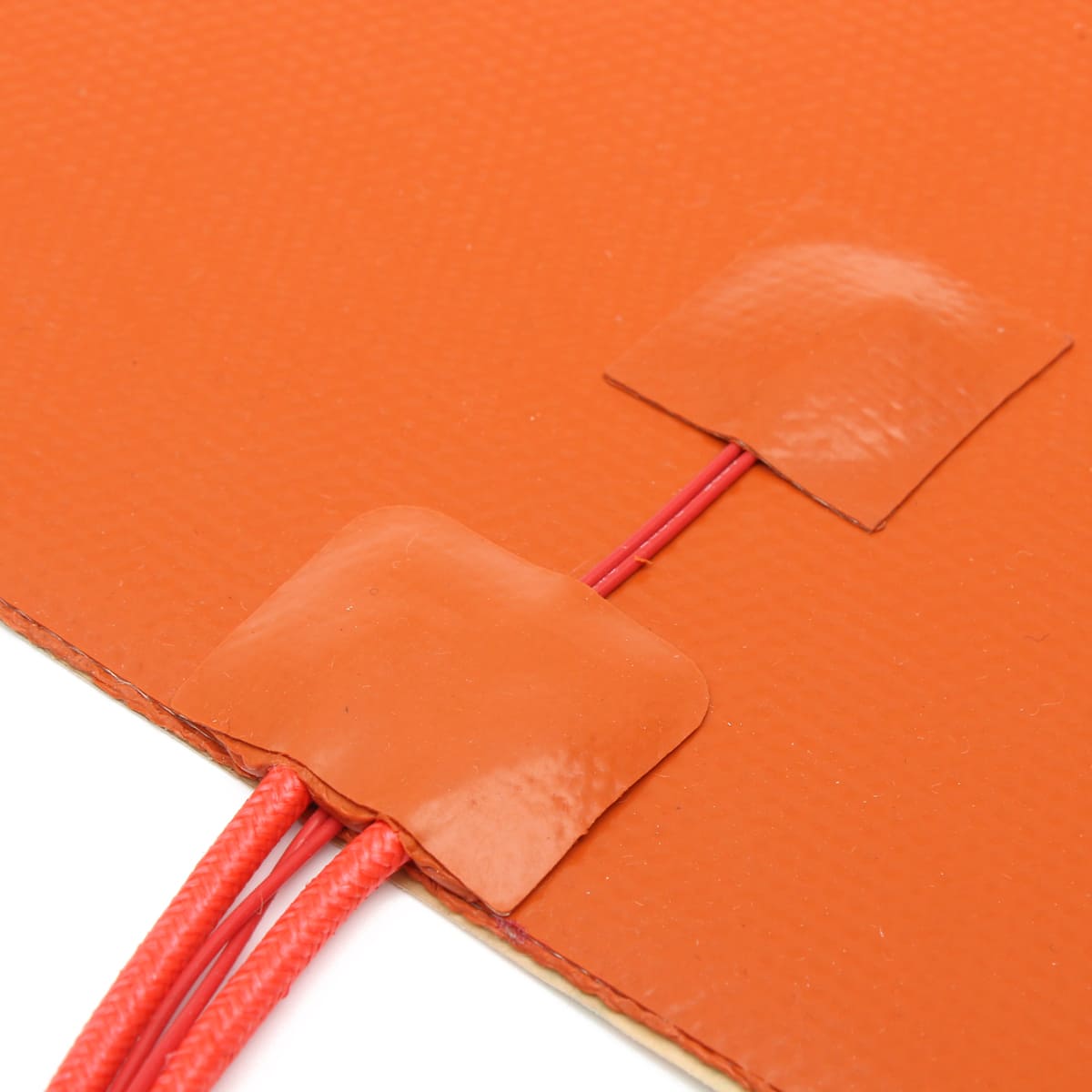

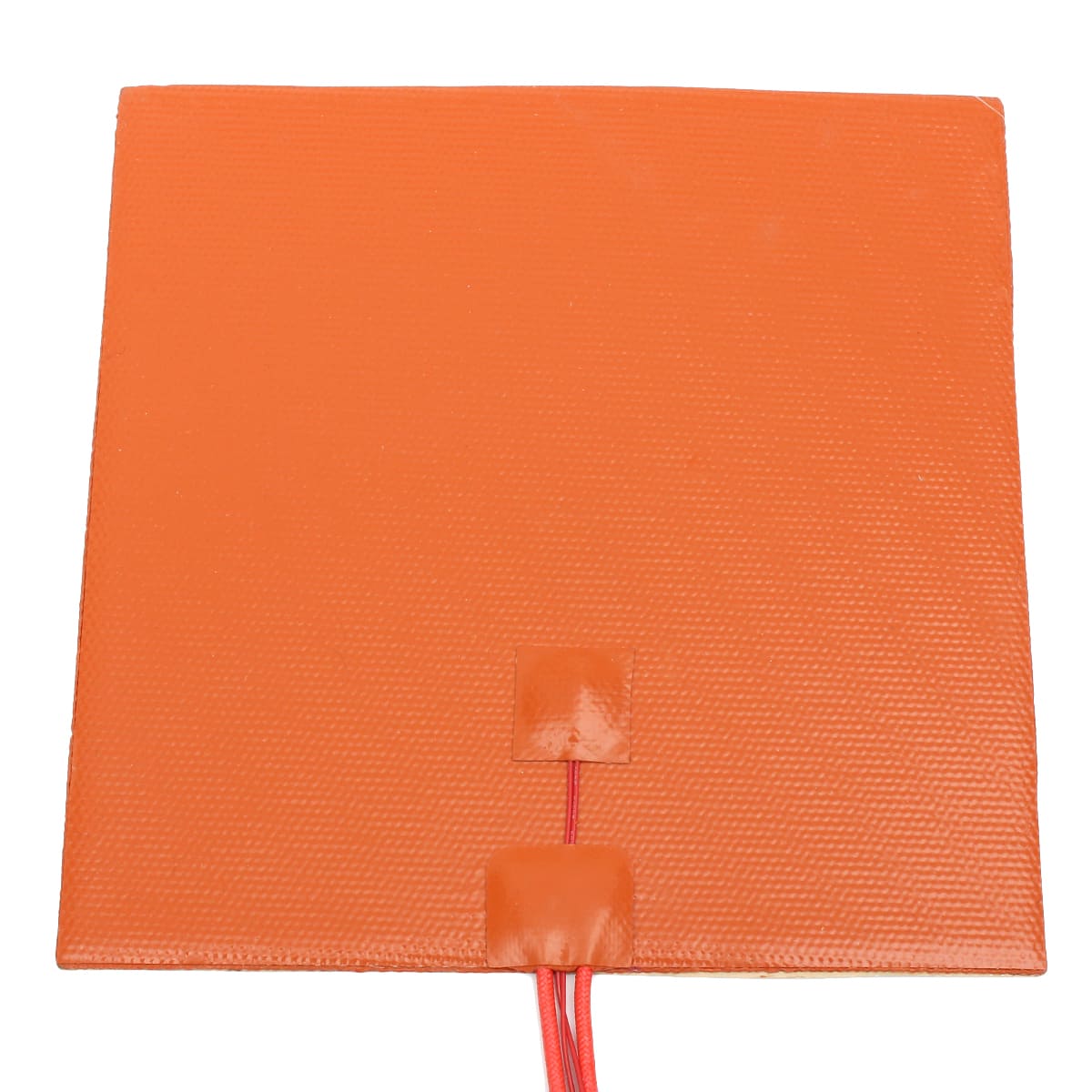
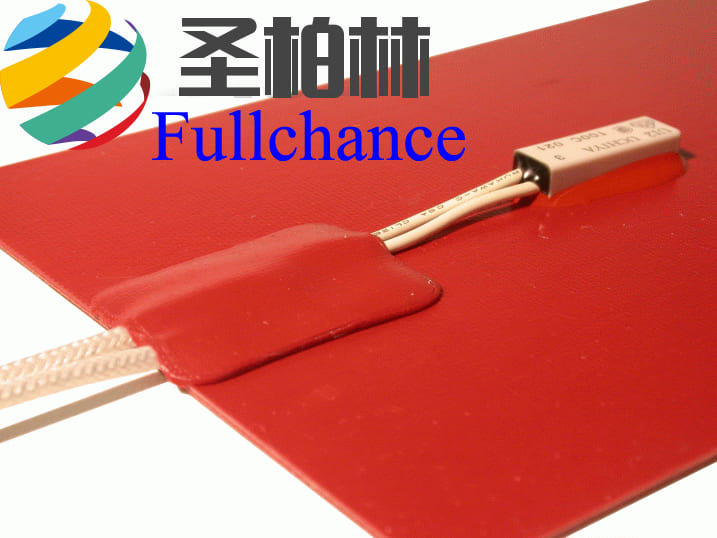
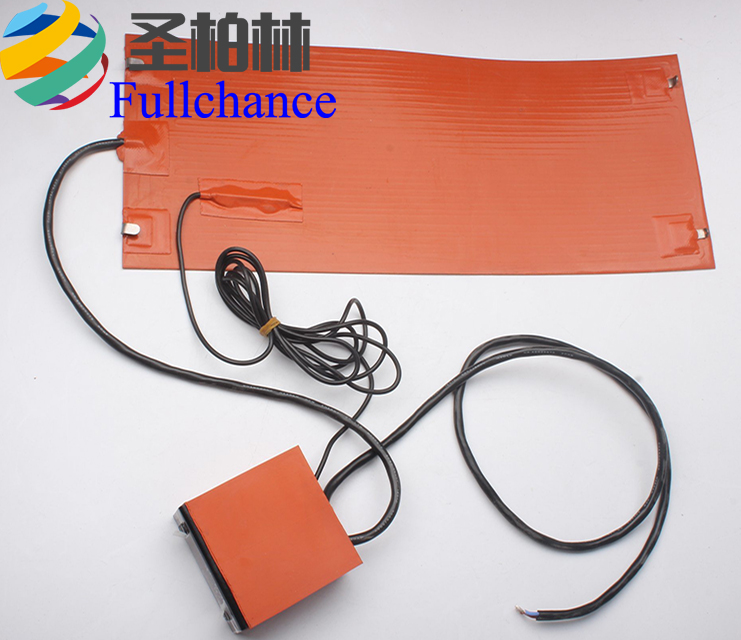
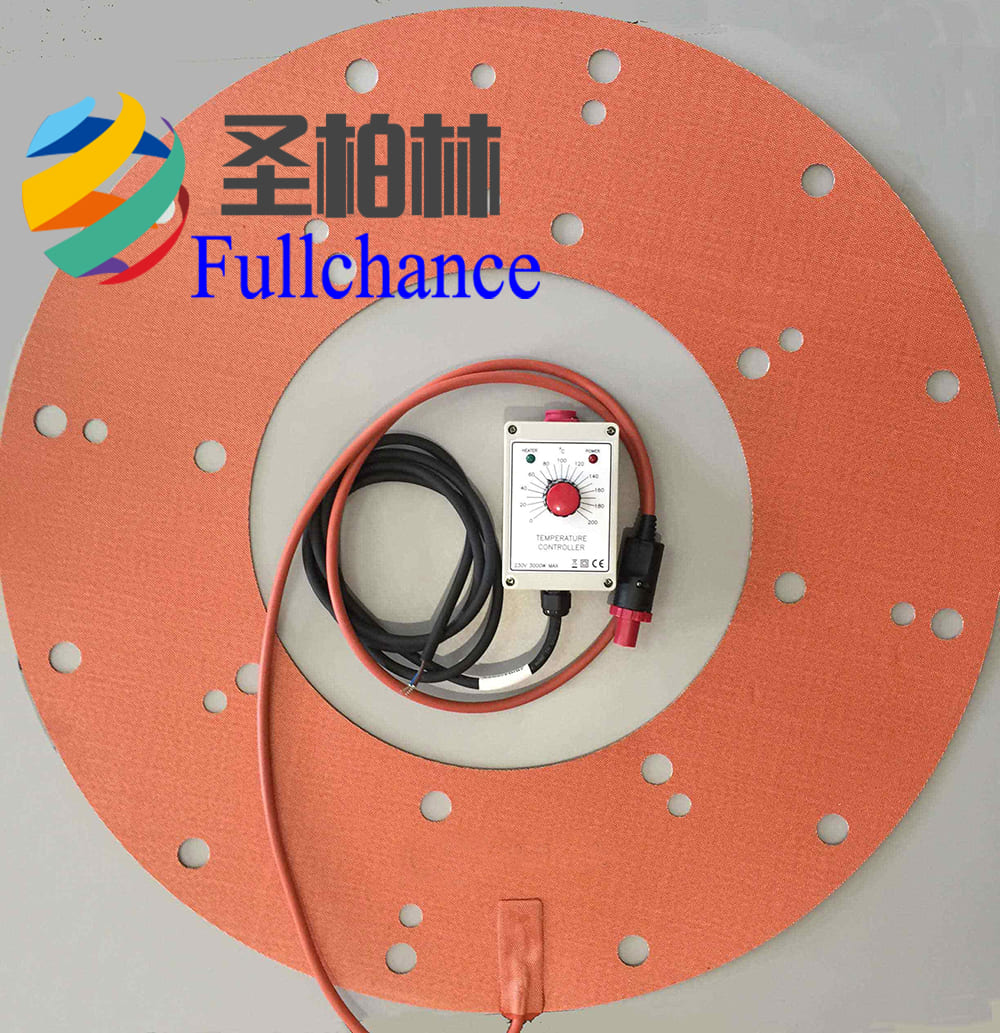












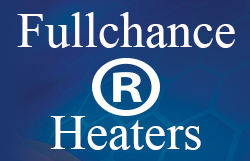

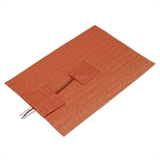
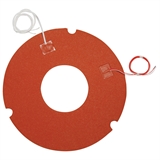
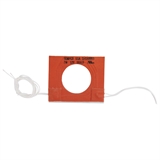
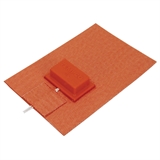
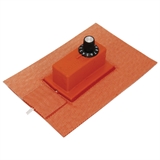
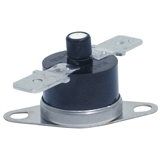
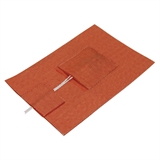
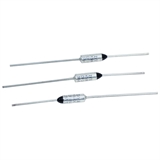
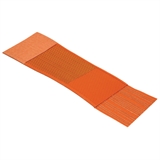
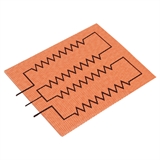
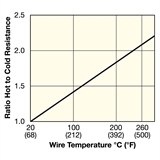
 customer service1
customer service1 